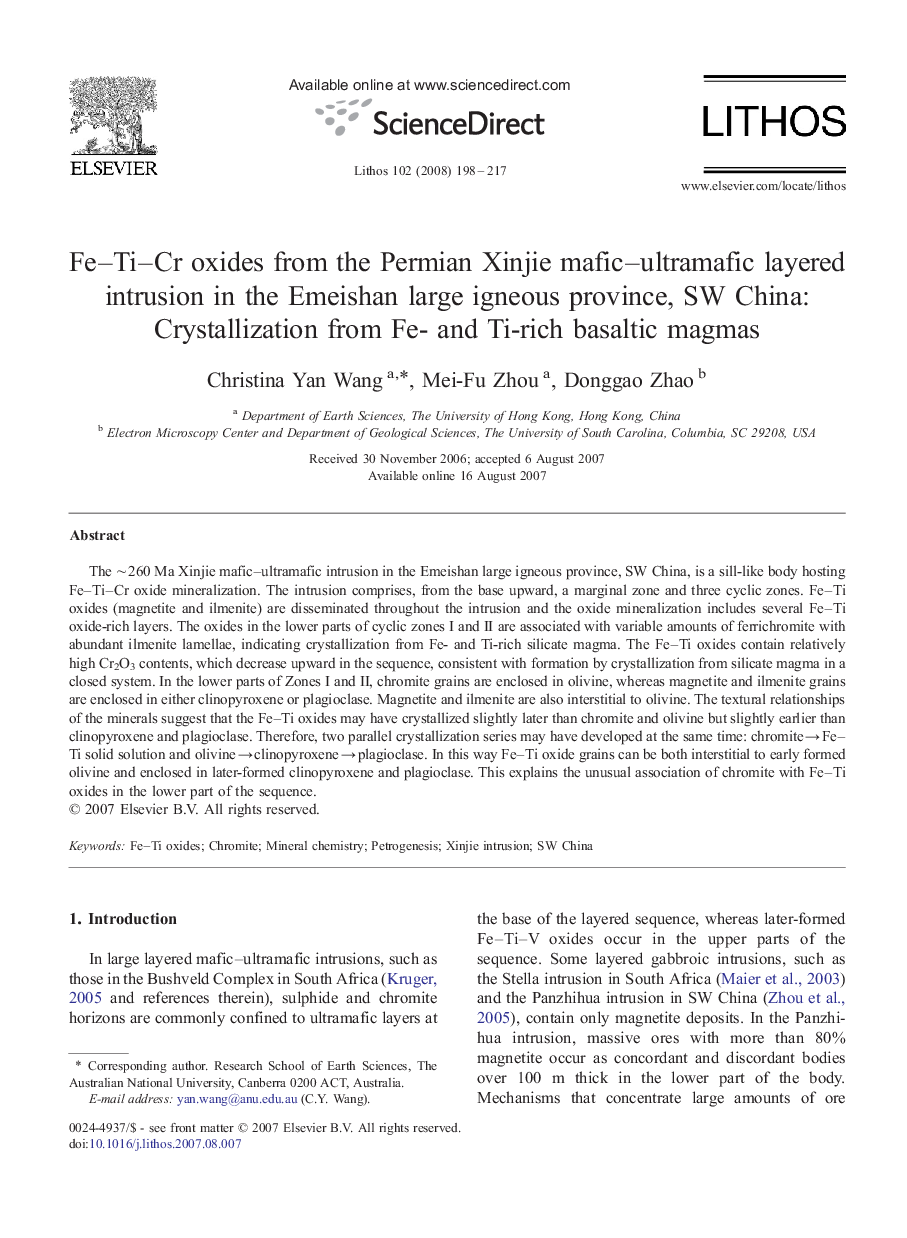| Article ID | Journal | Published Year | Pages | File Type |
|---|---|---|---|---|
| 4717517 | Lithos | 2008 | 20 Pages |
The ∼ 260 Ma Xinjie mafic–ultramafic intrusion in the Emeishan large igneous province, SW China, is a sill-like body hosting Fe–Ti–Cr oxide mineralization. The intrusion comprises, from the base upward, a marginal zone and three cyclic zones. Fe–Ti oxides (magnetite and ilmenite) are disseminated throughout the intrusion and the oxide mineralization includes several Fe–Ti oxide-rich layers. The oxides in the lower parts of cyclic zones I and II are associated with variable amounts of ferrichromite with abundant ilmenite lamellae, indicating crystallization from Fe- and Ti-rich silicate magma. The Fe–Ti oxides contain relatively high Cr2O3 contents, which decrease upward in the sequence, consistent with formation by crystallization from silicate magma in a closed system. In the lower parts of Zones I and II, chromite grains are enclosed in olivine, whereas magnetite and ilmenite grains are enclosed in either clinopyroxene or plagioclase. Magnetite and ilmenite are also interstitial to olivine. The textural relationships of the minerals suggest that the Fe–Ti oxides may have crystallized slightly later than chromite and olivine but slightly earlier than clinopyroxene and plagioclase. Therefore, two parallel crystallization series may have developed at the same time: chromite → Fe–Ti solid solution and olivine → clinopyroxene → plagioclase. In this way Fe–Ti oxide grains can be both interstitial to early formed olivine and enclosed in later-formed clinopyroxene and plagioclase. This explains the unusual association of chromite with Fe–Ti oxides in the lower part of the sequence.
